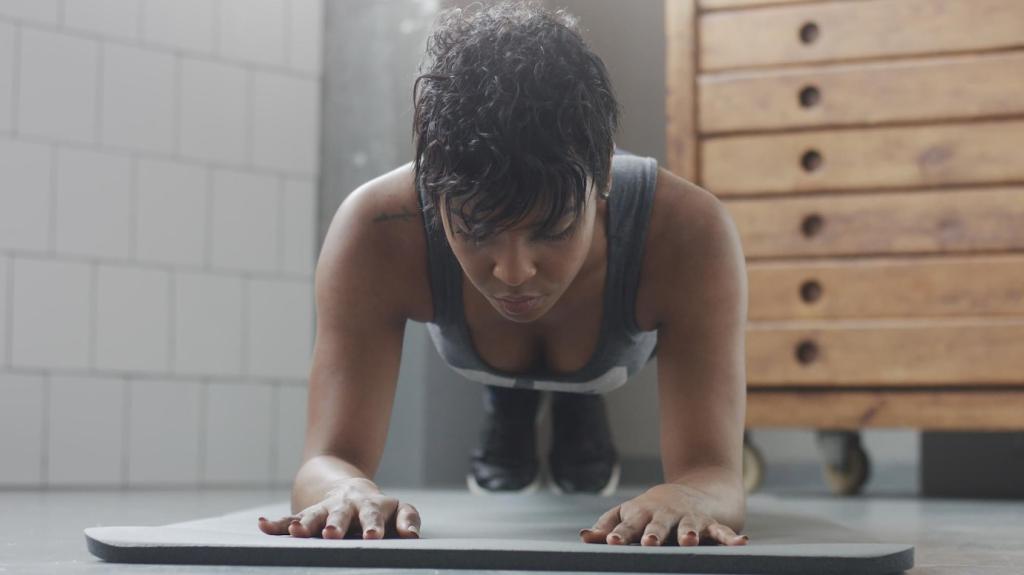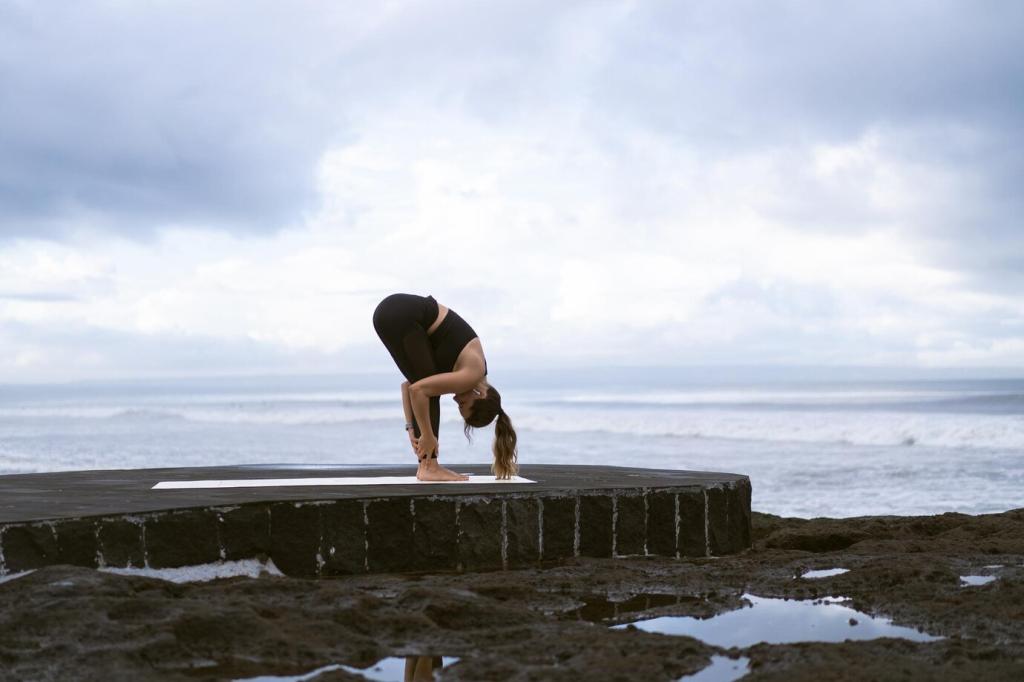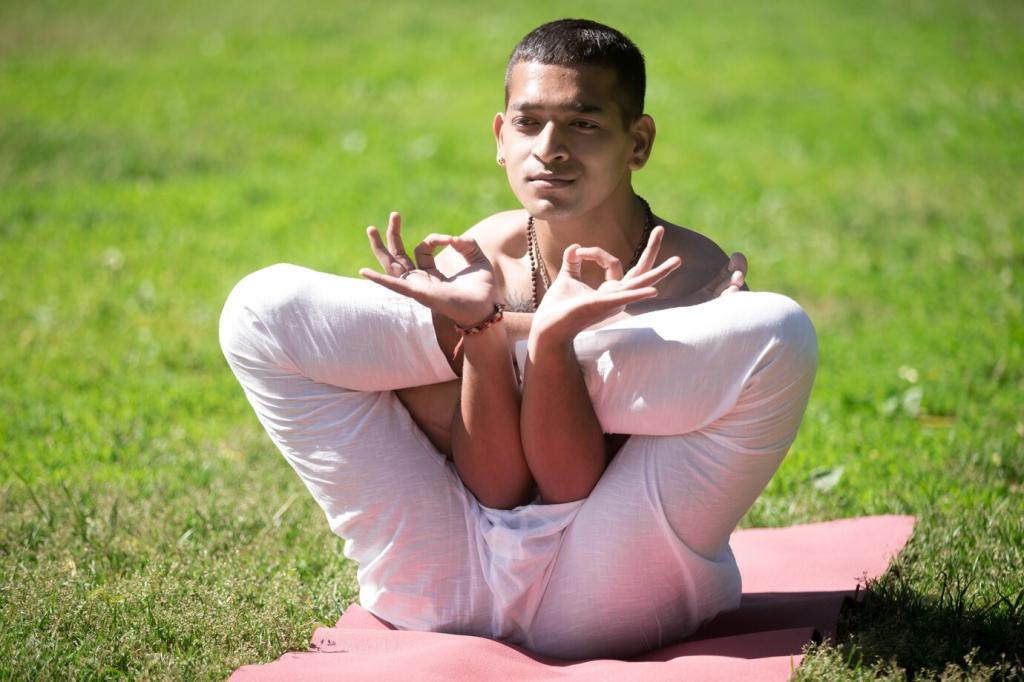Mindfulness Exercises for Athletic Performance: Train Your Mind Like a Muscle
Chosen theme: Mindfulness Exercises for Athletic Performance. Step onto the field with calmer nerves, clearer focus, and a steadier pulse. Today we explore practical, science-backed mindfulness drills for athletes who want to compete with presence, recover smarter, and find their flow. Share your routines in the comments and subscribe for weekly training cues you can use immediately.
Breathwork That Switches You On, Not Off
Try four counts in, four hold, four out, four hold for three cycles before drills. This steady rhythm reduces pre-competition jitters, supports decision speed, and helps you arrive ready, not rushed. Comment with your preferred count and how it affects your warm-up.


Breathwork That Switches You On, Not Off
Use a double inhale through the nose followed by a long, slow exhale through the mouth to reset quickly. This technique lowers stress and balances heart-rate variability so you can refocus fast. Save it for timeouts, transitions, or before clutch attempts.





Attention Anchors and Cue Words Under Pressure
Pick a visual anchor—laces, ball seam, rim corner—link it to one slow inhale, then act on a single task. This trims cognitive clutter and centers movement quality. Tell us your anchor object and the situation where it works best.
Attention Anchors and Cue Words Under Pressure
Great cues are simple, vivid, and action-based: “Tall,” “Drive,” “Snap.” Test them during submax reps to ensure they sharpen feel rather than distract. Rotate until one consistently elevates execution. Share your top cue and why it resonates with your sport.
Mindful Visualization and Motor Imagery That Transfers
Spend five minutes visualizing tomorrow’s key reps with sound, feel, breath, and environment details. Imagine weight, rhythm, and foot pressure changes. End with a deep exhale to seal the image. Comment on how sleep quality and confidence shift by week two.
Mindful Visualization and Motor Imagery That Transfers
Mentally insert common disruptions—wind gusts, bad bounce, crowd noise—then watch yourself apply reset cues and execute anyway. This inoculates against panic and preserves technical form. Share your most useful adversity scenario and coping script.


Mindful Movement: Turn Drills Into Meditation
Tempo Reps with Breath Counts
In strength sessions, inhale on the eccentric for three counts, brief pause, then exhale on a crisp concentric. This mindful tempo reveals leaks in form and boosts intent. Track bar speed and note technique stability across sets.
Walking Cooldowns as Moving Meditation
Finish training with five minutes of easy walking, syncing steps to breathing and observing posture. Scan hips, feet, and arm swing without criticism. This calms the nervous system and accelerates recovery. Invite a teammate and compare sensations.
Barefoot Balance and Proprioception Minutes
Spend two minutes per leg on soft surfaces, eyes focused on a single point, breathing steadily. Notice micro-adjustments in ankles and hips as information, not threats. Log improvements in stability and share favorite surfaces in the comments.
Self-Compassion and Constructive Self-Talk for Resilience
Say, “I’m frustrated,” remind yourself, “Athletes feel this,” then choose one controllable cue for the next rep. This mindful loop prevents spirals and preserves training quality. Share your favorite compassionate phrase that keeps you moving forward.
Self-Compassion and Constructive Self-Talk for Resilience
After sessions, note one win, one learning, one adjustment. Keep tone objective and kind. Over time, this practice shifts identity from result-chasing to skill-building. Post today’s three notes and encourage a teammate to try the template.
Self-Compassion and Constructive Self-Talk for Resilience
End practice with one breath together and one gratitude each. This fosters connection, buffers stress, and reinforces shared standards. Try it for a week and report changes in locker room energy and late-practice focus.
Build a Habit You’ll Keep: Tiny, Trackable, Social
Habit Stacking with Existing Routines
Attach one minute of breathwork to something you already do—tying shoes, taping wrists, or setting your watch. Small anchors compound into dependable rituals. Comment which routine you stacked and how adherence looked after ten days.
Track What You Practice, Not Just Results
Use a simple tracker: breathwork, scan, visualization, reset. Check boxes, add one sentence about feel. Process metrics reveal why performance changes. Share your weekly percentages and insights gained from consistent tracking.
Share Wins and Questions with the Community
Post one mindfulness win and one obstacle each week. Asking publicly strengthens commitment and sparks creative solutions. Invite a training partner to join, then update us on how peer support improved your follow-through.

